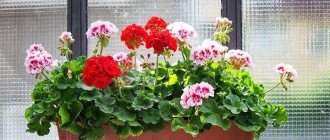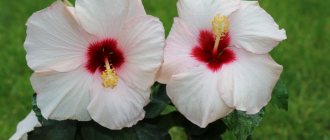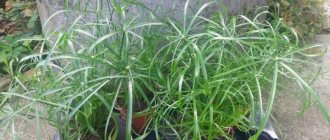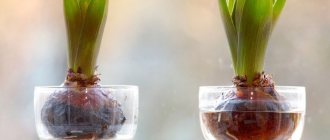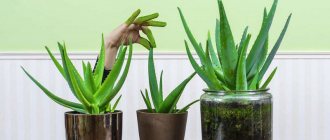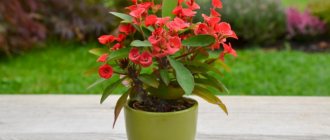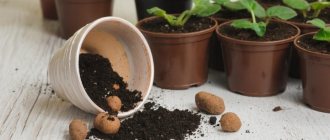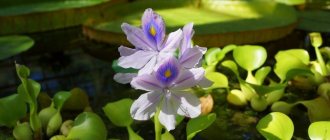Indoor moisture-loving plants: photos, names
Do you know how beneficial indoor plants are? The most comfortable air for humans contains at least 40% humidity - moisture-loving plants help to achieve such indicators. Compared to conventional ones, they evaporate much more moisture and do an excellent job of purifying the air.
In addition, natural cleansing moisturizers have excellent decorative properties.
In this article we will tell you about the most popular moisture-loving plants, photos of which are unlikely to leave you indifferent. We'll start with some tips for growing them.
We choose moisture-loving plants and improve the garden
To form a garden on soil with high humidity, only moisture-loving plants are selected from a wide range. These are creeping herbs, flowers, shrubs, trees. It is worthwhile to correctly compose a composition of plants according to shape, size, and colors, for example, when forming a flower bed, focus on yellow iris, variegated reeds, and place an indoor flower in the center of the flower bed.
Take into account the fact that decorative willow and white turf have bright multi-colored shades of bark. For planting, variegated sedge, cotton grass, reeds, rushes, calamus are used, and among cereals - manna. They are distinguished by narrow leaves of different lengths and different shapes of inflorescences that bloom in different months of the season.
Moisture-loving trees
European and forest purple beech are surprising with decorative foliage that may not fall until snowfall; they are suitable for decorating hedges. Excess moisture is not a problem for the common hornbeam either; it amazes with its silver-gray bark, bright green leaves, and in the fall - lemon and yellow, blooming indoor flowers in pots - bright and colorful.
How best to improve a swamp
If there is a swamp on the territory of the dacha, then it will be decorated with an interesting chastuha or arrowhead. They are distinguished by umbrella-shaped inflorescences with white flowers with a pink tint and interesting succulent foliage. In very damp places in the garden, callas with large leaves, flowers, tall stems, orange leopards, yellow marigolds, and pink loosestrife take root. The right choice of plants will make the swamp brightly blooming and colorful.
Features of growing moisture-loving plants
The main and most important condition for maintaining such plants is to ensure high soil moisture. This can be achieved through regular watering and spraying. Another important point is the presence of a drainage system at the bottom of the flower pot. True, not all moisture-loving plants tolerate stagnation of water at the roots well. Fine expanded clay is most often used as drainage.
To maintain normal air humidity, a sufficiently large number of moisture-loving plants is necessary. When installing flower pots in the bathroom, you should take care of the source of ultraviolet light - it is advisable that there is a small window in the room. In addition, plants need protection from the ingress of detergents with an aggressive chemical environment. In the following sections, we invite you to find out which moisture-loving plants are best grown at home.
Crassula, or money tree
Another plant that looks moisture-loving. Crassulas have fleshy leaves that appear juicy. They became popular as a plant that brings money into the house. Because of this sign, money amulets are hung on branches. This does not interfere with the plant, but it needs proper loving care. Otherwise, experts in household magic say, the money tree will begin to attract poverty instead of financial well-being.
This plant really needs water constantly. But after watering, the fat plant stores water in its leaves, which look like green pads. The flower does not tolerate tap water well. To water, the liquid must be left to sit for at least a day. This is not difficult, because the fat plant needs to be watered a couple of times a week, but generously.
The flower needs a good layer of drainage at the bottom of the pot. This way it will absorb just enough water to maintain balance. The plant sheds its leaves both when there is a lack of moisture and when there is an excess of it. If the fat woman suddenly loses weight and gets rid of shoots and leaves, it is being bothered by the heat of the radiator or the increased temperature in the room. For a plant in nature, this is a signal that drought is approaching.
Flowers that love moisture are suitable for beginning gardeners. Most other indoor plants require measured watering. They need more light than tropical and swamp watermen. And if you remove them from the windowsill, they can dry out. Unlike their moisture-loving green counterparts.
Anthurium
One of the best examples of moisture-loving plants belonging to the Araceae family. Anthurium is native to the Amazon rainforest. The varieties Andre and Scherzer are considered the most suitable for growing indoors. The plant is considered quite capricious and requires the creation of certain conditions. Anthurium must be grown in good lighting and an air temperature of at least +18 °C. In addition, regular ventilation, spraying and abundant watering are important. The best option for moisturizing is placing the flower pot in a tray with wet peat.
Despite the whimsical care, many gardeners still prefer this plant. It's all about his stunning appearance. Anthurium flowers are quite inconspicuous in appearance; all the beauty lies in the bract. Judging by the photos of moisture-loving plants, it can be snow-white, red, pink, orange and even blue.
Moisture-loving herbs
Grasses in nature are accustomed to extreme conditions. These are moisture-loving and at the same time persistent plants. If you forget to water them, they will turn into a clump of hay sticking out of the pot. They react instantly to fresh water and send out fresh shoots. With abundant watering they turn green and even bloom.
Known species:
Calamus is a marsh grass and looks the same. Indispensable in indoor mini-gardens as a background for more spectacular moisture-loving plants. In long boxes it creates a grassy wall for decorating office partitions and window sills in entrances, because it is not afraid of drafts and cold.
Monstera
Another moisture-loving plant from the Araceae family. A large tropical liana came to us from the tropical forests of South America. In home growing conditions, the delicious monstera is most often used. This plant needs moist and warm air. In summer, the flower needs frequent and abundant watering, but in winter, the amount of water should be significantly reduced. In addition, it is necessary to constantly spray the plant and wash the leaves with warm water.
Monstera is an unpretentious plant; it can grow 5 meters in height. When growing it indoors, it can be quite difficult to achieve flowering. Greenhouse specimens delight with white flowers that look like a closed lily, and the edible fruits taste like a ripe banana.
Indoor plants for growing in water
Now it's time to choose your plants!
1. Aquatic plants
Plants that can be completely submerged in water. These plants need soil or gravel at the bottom to anchor their roots.
2. Semi-aquatic
Plants that can only be partially submerged in water. Their roots will be submerged in water, and their foliage will be on the surface of the water.
3. Floats
The best example for this category is the very common water hyacinth and water lettuce.
Good plants for water are known from hydroponic farming, as plants are often grown commercially, but farmers have a more specific cocktail of water for liquid nutrition instead of soil. We just add diluted fertilizer, that’s enough.
So, it's time to choose good plants to grow in water.
Will fit
aglaonemas, dieffenbachia, English ivy, chlorophytum, philodendron, agasphere arrowhead, spathiphyllum, tradescantia zebrina, creeping plants from cuttings.
Platycerium
The moisture-loving plant, whose name translates as “flat horn” or “deer horn,” has a rather exotic appearance. The appearance of its leaves really resembles deer antlers.
Platycerium needs constantly warm and humid air. It is best grown hanging on bark wrapped in moss. It is also possible to grow in ordinary flower pots, but you need to use an orchid substrate, which should be constantly moistened. Provide it with good protection from drafts and drying out. An important point in care is to be careful with the surface of the leaves - the small villi that provide access to moisture to the plant are very sensitive, so mechanical influences are contraindicated. It is strictly forbidden to wipe the leaves!
Domestic green giants
Sometimes you want to see a tub with a large plant in an empty corner. Large moisture-loving indoor plants will survive well in such poor lighting. They will decorate the room and absorb carbon monoxide if they are provided with the usual conditions - moist soil.
The most popular monster plants:
Monstera is a real giant among indoor plants. This is a South American vine that grows up to five meters. Green monsters often live in libraries, reception areas and foyers of various institutions. This is a plant with large dark green leaves that look like they have had large holes cut out of them.
Monstera needs plenty of moisture in summer; in winter it is satisfied with moderate watering. Leaves should be regularly wiped from dust, which serves as a good reason to take a break and communicate with nature.
Palm trees grow in the tropics, in both dry and very humid climates. They grow if watering is combined with spraying, because the leaves also absorb water. The ideal conditions for palm trees in northern latitudes are a greenhouse.
In your own winter garden with one palm tree in a pot or tub, you need to create a humid atmosphere. The plant is sprayed and trays with water are placed next to it. Place a damp cloth over hot batteries.
The most moisture-loving types of palm trees:
- Bamboo palm, or Hamedorea;
- Umbrella palm, or licuala;
- Fan palm or Livistona.
All of these palms come from tropical rainforests and have very beautifully shaped leaves, as reflected in their names. Plants require the soil to be constantly moist. If you forget about watering, you will be reminded by yellowed leaves. Excessive watering can cause roots to rot, but palm trees usually do not suffer from this.
Begonia
One of the most common flowers, which is both moisture-loving and drought-resistant. The plant is loved by gardeners due to its long flowering period. Decorative deciduous and decorative flowering varieties of begonia are used for growing indoors. Some varieties are able to retain their original leaves throughout the year, but the most beautiful are tuberous begonias, which have luxurious flowers.
These plants are completely unpretentious in care and resistant to many diseases. It is advisable to place the flower pot in a well-lit place with diffused sunlight. Water the plant as the top layer of soil dries. To maintain optimal soil moisture, the flower pot can be placed in a tray with wet peat. On hot summer days, it is advisable to spray begonia with a spray bottle.
Cyperus
Sytov, or rosemary, as this plant is also called, belongs to the sedge family. Cyperus began to be grown indoors relatively recently - about 35 years ago. It is loved by many gardeners due to its unpretentiousness and high decorative qualities. The rather original appearance of the plant can decorate almost any interior.
Growing this moisture-loving plant involves using well-lit places with diffused sunlight. On particularly hot days, it is advisable to remove the flower pot from the windowsill to avoid burns. In winter, on the contrary, the plant should be provided with additional lighting using fluorescent lamps. Watering should be regular and plentiful, and during the period of active growth, the roots should be completely in water. In winter, excess water from the pan should be drained, and spraying should be reduced by at least half. From the beginning of spring to the end of autumn, every 2-3 weeks it is necessary to feed the plant with organic and mineral fertilizers, alternating them with each other.
Dracaena
Dracaena gained its popularity due to its exotic appearance, reminiscent of a palm tree. This moisture-loving plant will serve as an excellent decoration for office premises, and it also perfectly purifies the air from the harmful effects of office equipment. Dracaena looks great both as a single plant and in composition with other flowers.
To grow dracaena, it is important to choose a well-lit place, but it is better to protect it from direct sunlight. In addition, it is important to ensure constant air humidity through regular spraying. When kept in dry air for a long time, the leaves begin to turn yellow and fall off. In particularly hot weather, wash the plant under a warm shower or wipe the leaves with a damp sponge. For irrigation, use rain or settled water, since tap water is too hard.
The Best Houseplants for the Bathroom
Amateur flower growers recommend species of indoor flora that have already been “tested by bath life” and the information in the article. Some of their beautiful ones will be discussed below.
Fern, or nephrolepis
This member of the fern family does not require any special care or method, but is best kept and preserved indoors with a custom window. If it doesn't get enough daylight, the leaves will fall off. But he is very moisture-loving: regular spraying and a warm shower once a week will please him.
The kitchen uses hot water the same way
Important! The water jet in the shower should be quite weak so as not to damage the shoots.
The color of artificial cyperis is different
Aspidistra
This plant loves shade, even the densest. Aspidistra is tolerant of humidity and sudden changes in temperature. Even +10 degrees suits her. Watering this flower and the soil should be moderate and regular - so that the earthen ball does not dry out or become waterlogged.
Comment: You need to properly put in order and care for plants with your hands.
Begonia
The decorative deciduous species of beautiful begonia is undemanding to lighting and thrives in moist, optimal air, which cannot be said about spraying: if water gets on the tubers, they can rot. Therefore, watering should not only be moderate, but also careful. For this, a certain amount of filtered water at room temperature is used.
The atmosphere in the toilet on the sink or washbasin will be perfect thanks to the colors.
Ivy
This unpretentious vine is readily used by designers in many interior design applications. A resident of the subtropics is accustomed to the shady forests of his homeland, so he can be placed in a bathroom with a lack of bright light, and he will feel quite comfortable. But dry hot air can destroy it.
Ivy is good for decorating the top shelves and used for vertical landscaping.
By the way! To the decorative properties and solutions of ivy, one more useful quality should be added: this plant is a very effective air purifier.
In the right moisture it begins to bloom quickly and strongly.
Aglaonema
The owner of large leaves of different shades - from green to slightly yellow with red-orange veins - looks very impressive. But as for its placement in a lightly shaded place, in particular in the bathroom, you should keep in mind: only species with green leaves will always feel good and comfortable there.
Drops of water - reasons for the connection between the deterioration of the flower's condition
Aglaonema needs moist air, abundant watering and moderate heat - up to 25°C, even during the heating season.
It grows extremely slowly, and it should not and cannot be replanted often.
Advice! When working with this plant, you must use gloves because it has poisonous sap that can cause burns to the skin.
Will serve as decoration on the closet
The issue of watering is a very serious one
Sansevieria
This is the scientific name for the familiar “mother-in-law’s tongue.” This is a very tenacious and resilient plant that can perform well in any conditions, including poorly lit places, in particular a bathroom without a window. If it lacks light or material, growth will simply slow down and the leaves, which, by the way, also filter the air and produce oxygen, will become less bright.
Selaginella
This house plant is indispensable for green decoration. Its compact bushes have miniature openwork leaves. It is good to shape the plant, giving it the necessary shape, including the popular spherical one.
Caring for and watering selaginella is not difficult if you know that it loves darkness (which means it is also suitable for a bathroom without a window), abundant watering with frequent spraying and a minimum of fertilizers.
Comment: It is important to take out and treat your green pets
Creating a flowerpot
Chlorophytum
Its main qualities are endurance and decorativeness. Thanks to them, it is very popular in indoor “green design”. Chlorophytum can also be grown in the bathroom, since it is completely unpretentious and thrives in the shade.
Moss
The only plant that can survive with virtually no light is moss. Even if there is no window in the bathroom, using different types of moss you can create a kind of terrarium and create an original composition in it, playing with different leaf shapes and shades. There is no need to water it; it is better to spray it two to three times a week.
Aloe vera
Even novice flower growers can work with it without any problems, since it is very durable. He will be quite comfortable in the bathroom even in low light. In addition, we must not forget that it is also a medicinal plant.
Dracaena
Thanks to its unpretentiousness, it is literally a godsend for landscaping the bathroom. She doesn't need a lot of light, and she doesn't like direct sunlight falling on her. But high humidity, warmth (+15–20°) and the absence of drafts are simply necessary.
The presence of a washing machine cancels the agreement for the purchase of epipremnum
Bamboo
Bamboo can grow in almost any lighting and condition. It doesn't even require soil. It is enough to place its root in a vessel filled a few centimeters with pebbles. Water is added to half the container. You just need to monitor its level and add it periodically. Bamboo with curly stems will look advantageous.
Tradescantia
Quite a popular moisture-loving indoor plant, which has about a hundred varieties. The main decoration of the lush plant are the amazingly beautiful leaves. During the flowering period, the bush is covered with small flowers, collected in neat inflorescences-bouquets.
The main condition for growing tradescantia is to provide rich lighting. With a lack of sunlight, the leaves become pale and weakened, variegated Tradescantia loses its decorative qualities - the bright stripes on the leaves disappear, they become monochromatic. However, prolonged exposure to direct sunlight leads to burns on the delicate leaves and stems of the plant, so light shading should be provided. Regular watering is important; under no circumstances should the soil be allowed to dry out.
To protect the root system, you should periodically loosen the soil. In addition, every month you need to fertilize at the time of watering. For these purposes, warm, settled water is used.
Floral Heritage
Moisture-loving houseplants can do without watering for a couple of weeks. They are accustomed to storing water in fleshy stems and leaves. If watering suddenly stops for a while, they act as in nature. The leaves shrink and fall off, giving up moisture to the stem and roots. When a loving gardener spares no water, plants grow quickly and abundantly.
The most common and familiar:
- Tradescantia.
- Ferns.
- Cyperus.
- Begonia.
- Unique moisture-loving chlorophytum
Beauty Tradescantia
The great-grandmothers did not know book words, so they gave the plant the apt name “Grandma’s Gossip.” Long stems with succulent leaves reach one and a half meters and hang beautifully from flower pots in the darkest corners. In the interior of the 60s, wall and floor metal stands for pots, painted to resemble a birch trunk, were popular. The stems of Tradescantia really resemble thin birch branches.
Tradescantia was brought to Europe in the 17th century from America. In its homeland it is a creeping undergrowth plant. There are moisture-loving species and those adapted to the conditions of mountain deserts. The plant in nature reproduces by rooting stems. That's why Tradescantia was so popular. It is enough to tear off the stem, put it in water, and after a couple of weeks the shoot with roots can be planted in a pot.
Many types of Tradescantia have been bred for growing indoors and for open ground. The leaves come in all shades of green or with stripes of white, yellow, and pink. Tradescantia does not require any care other than regular watering.
Features of ferns
Ferns survived all natural disasters and adapted to the climate of city apartments. Ferns of the genus Nephrolepis are common among gardeners. The most unpretentious Nephrolepis sublime, which anyone will immediately recognize as a fern.
Nephrolepis boston, cordate and others have an original leaf shape. They are “curly”, round or narrow. Because of the shape of the stems and leaves, florists like to decorate flower arrangements with ferns.
Ferns thrive with regular watering. If you take the time to spray, the fern will grow luxuriantly in a shaded area. Theoretically, it can reproduce by spores. Flower growers propagate ferns by dividing the rhizomes.
Cyperus, or swamp
In everyday life it is often called papyrus. Requires that there be an abundance of water in the pot, a real swamp. At a minimum, there should always be liquid in the pan. He is happy if he is planted in an aquarium with fish for beauty. Too dry air in the house is indicated by yellowed tips of the leaves. This means it’s time to spray it, recreating the climate of subtropical swamps.
Cyperus reproduces interestingly:
- All stems for vegetative propagation are placed in water with their leaves upside down.
- The cyperus shoot in the form of a miniature palm tree is turned upside down and the top is placed in water.
- The plant takes root and is transplanted into the ground.
Cyperus is sometimes called the cat palm. Some cats climb onto window sills, knocking pots over, to chew leaves. If there is an abundance of moisture, cat attacks are not scary; the plant grows so much that it needs to be pruned regularly. And cats are looking forward to their portion of cat palm.
Begonia for home
A plant for fans of home gardening. Requires regular, abundant, but dosed watering, diffused, but good lighting. The air around the plant should be humidified, but not sprayed on the leaves. With proper care, it pleases with abundant lush flowers and decorative leaves.
In addition to the traditional methods of propagation by cuttings or dividing the rhizome, begonia can be propagated by dividing the leaf:
- Pieces of leaf are stuck into the soil.
- Keep in a mini-greenhouse until mini-shoots appear at the base.
- Then they are transplanted into the soil.
So from one leaf you can get up to a dozen new plants.
Unique moisture-loving chlorophytum
Chlorophytum deserves special mention among moisture-loving indoor plants. It is credited with almost magical properties to purify the atmosphere in the house.
This is true. Of course, it purifies not karma and aura, but the air. It has a unique ability to capture formaldehyde, which is abundantly emitted by plastic electrical appliances and furniture made of fiberboard. Like any green creature, it greedily absorbs carbon dioxide.
To honestly clean the air, chlorophytum requires a lot of water. With regular watering, it will grow near computers and TVs, in the kitchen and even in the bathroom if there is a small window there. When the owners go on vacation, chlorophytum will wait for their return without watering. It will dry out the leaves and shoots to retain water in the roots. And it will grow again, like any grass, if you give it plenty of water.
Cyperus
Cyperus (lat. Cyperus) belongs to the sedge family. In nature, it grows near rivers or wetlands in tropical regions of Africa and Asia. In many sources this plant can be found under the name Syt. In indoor floriculture, it is still customary to call it by its Latin name, i.e. cyperus. The plant is very unpretentious. Tolerates irregular watering and lack of light. Continue reading →
- moisture-loving plants
- medicinal plants
- unpretentious plants
- north window plants
Allamanda
Allamanda (lat. Allamanda) belongs to the Kutrovye family. Natural habitats are the countries of South America. It blooms in the summer season with large and bright flowers. Growth form: liana-like shrub. Therefore, the shoots will need support in the form of a trellis. In order for the flower to be decorative, it must be pruned annually. This will enhance branching and, accordingly, flowering. Continue reading →
- moisture-loving plants
- vines
- sunny window plants
- Kutrovaceae family
- demanding plants
- poisonous houseplants
Why doesn't the orchid bloom?
Why doesn't the orchid bloom? As always in floriculture there is no easy answer. Each lover of indoor plants subjectively evaluates his conditions. It is possible that your orchid, which is “feeling great” and is also splendidly growing new leaves, is in fact unable to form a flower arrow. In addition, orchids began to be grown en masse in our Continue reading →
- moisture-loving plants
- dendrobium care
- orchids
- phalaenopsis care
Hydrangea
Hydrangea (lat. Hydrangea) belongs to the Hydrangeaceae family. Naturally grows in East Asia and South America. Sometimes the name Hydrangea is used based on the Latin form (Hydrangea). Hydrangeas gained popularity back in the 19th century. Among the English aristocracy, it was very fashionable to have bushes strewn with unforgettable cap inflorescences. Hydrangea is native to subtropical regions. Therefore, she easily tolerates soft European Continue reading →
- moisture-loving plants
- moderately demanding
"Moisture-loving and drought-resistant indoor plants." GCD with children of senior preschool age
Angelica Rud
"Moisture-loving and drought-resistant indoor plants." GCD with children of senior preschool age
Goal: to develop children’s ideas about the differentiated moisture needs of indoor plants .
1. Teach children to consider the features of the external structure of plants and, on this basis, classify them as drought-resistant or moisture-loving .
2. Expand knowledge about indoor plants .
3. Foster a love of nature.
Preliminary work: conversation about indoor plants ; reading poems and riddles about plants .
Priority educational area: Speech development
Educator: Guys, guess the riddle:
Leaf with a hump, groove,
It has thorns, but does not know how to hurt,
But he treats us at any hour.
Educator: That's right, this is aloe, guys, and what kind of plant ?
Children: This is an indoor plant
Educator: That's right, why is it called a houseplant ?
Children: Because it grows indoors
Educator: That's right, because it grows indoors . What conditions do all plants to grow well?
